










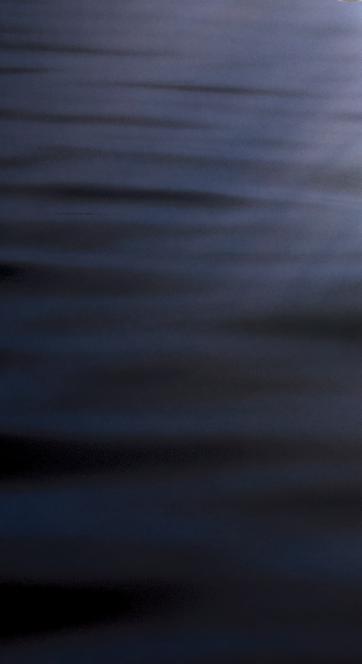




DRS4DNXTDRS6ANXT


You’re looking at it! Furuno’s award-winning Radar gives you clarity & target separation like no one else. Don’t take our word for it. See for yourself. Scan here, and we’ll show you!




























Embarking on the open water is an exhilarating experience, flled with the promise of adventure and relaxation. Whether you’re a seasoned sailor or a weekend cruiser, protecting your vessel with proper insurance is not just a choice—it’s a necessity. Explore the reasons why every boat owner should prioritize boat insurance for a worry-free voyage.
The open water can be unpredictable, with unexpected storms, collisions, or other potential accidents. Boat insurance can give you fnancial protection if there is damage to your vessel, providing coverage for repairs or replacement.
Accidents on the water can result in damage to other boats, docks, or even injuries to passengers. Boat insurance offers liability coverage, which can pay for damages or injuries you’re liable for while boating, up to specifed limits, and lawsuit costs if you’re sued. This includes damage you cause to another watercraft or if someone on or near your boat is injured and you’re found to be legally responsible.
Unfortunately, boat theft and vandalism are realities that boat owners face. Boat insurance has comprehensive and collision coverage that can protect you against events outside of your control, including theft and vandalism.
Accidents on the water may lead to injuries for you or your passengers. Boat insurance offers a range of optional medical payments coverage limits, helping to cover medical expenses if you are in an accident or someone is hurt on your boat, regardless of fault.
If you fnanced the purchase of your boat, most lenders require insurance coverage to protect their investment. Having boat insurance not only fulflls these requirements but also gives you peace of mind knowing that your fnancial interests are safeguarded.


Some water municipalities and marinas may require proof of insurance for docking or accessing certain areas. Boat insurance allows you the fexibility to explore different destinations without worrying about entry restrictions.
Emergency towing and assistance
Progressive boat insurance can include optional Sign & Glide® On-Water Towing coverage. If your boat is disabled or breaks down on the water, Sign & Glide® pays for on-water towing, jump starts, soft un-groundings, and fuel delivery.
Wreckage removal
If your boat sinks, Progressive boat insurance will cover the cost of removing your boat from the water (if removal is legally required).
Investing in boat insurance is not just about protecting a valuable asset; it’s about safeguarding the memories, experiences, and joy that come with your on-water adventures. Don’t let unforeseen circumstances disrupt your journey—navigate with confdence, knowing that Progressive boat insurance has you covered. Ensure a smooth and worry-free voyage, because when it comes to your boat, peace of mind is the ultimate luxury.
Scan to get a quote in as little as 4 minutes
learn more.

























If you love the outdoors and dream of being in business for yourself, now is the perfect time to make a change and choose a Coastal Angler or e Angler Magazine Franchise.
Ask one of our specialists about franchise territory availability in your area.









By Ben Martin, Editor in Chief
On December 11th at 3:00 p.m. the marine industry lost one of its kindest and most heartfelt supporters. A lifelong supporter of environmental awareness, the love of nature and teaching kids how to !sh, Rodney Smith was the earliest proponent of Florida’s groundbreaking net ban. He was the founder and publisher of the original Coastal Angler Magazine, creator and tireless volunteer of its Hook Kids On Fishing Program. Capt. Rodney Smith spent the better part of his life trying to improve the marine environment and sharing the wonders of the art and sport of !shing.
Rodney’s love and kindness was boundless.

Lifeguard, !shing captain, surfer, author, entrepreneur, and friend to all, Rodney Smith’s time on this earth was well spent helping others and showing love to Mother Nature and the marine environment.
Anyone whoever walked with Rodney would have invariably returned with a bag or pocketful of trash that he picked up along the way and then a erwards meticulously separated for recycling. Anyone whoever disparaged anyone else in Rodney’s presence would have immediately heard something positive about that person from Rodney. at’s just who he was.
Loving father, caring husband and faith driven entrepreneur, Rodney’s life was truly exemplary and saintlike. He will be missed, but he will also surely receive the same pat on the back and heartfelt “Good Job” that he gave to so many others while here.



Powered by twins, it runs over 30 knots and cruises efficiently at 20-30 knots. It’s a versatile, no-frills boat focused on rock-solid performance. Ideal for those needing a reliable, easy-to-maintain platform.
Powered by twins, the 20CC runs over 30 knots and cruises efficiently at 20-30 knots.
It’s a versatile, no-frills boat focused on rock-solid performance. Ideal for those needing a reliable, easy-to-maintain platform.




Whether you’re fishing in a kayak, canoe, or small boat, the ePropulsion eLite 500W redefines your on-water experience with innovative features and commitment to sustainability. Designed to be the most
and lightweight electric outboard in its class, it is an easy-to-use alternative to small internal combustion engines for enthusiasts worldwide. Max 5.6 miles at half throttle and 3.5 miles at full throttle. Experience the eLite Difference. Go Electric. Go Silent. Go Fishing!












The Discover Boating Miami International Boat Show (DBMIBS) is set to return from February 12–16, 2025, bringing an extraordinary showcase of the marine industry. is annual event continues to draw boating enthusiasts, industry leaders, and newcomers alike, o ering a combination of innovation, and community.
Highlights of the 2025 Edition
Spread across six iconic Miami locations—Miami Beach Convention Center, Pride Park, Herald Plaza, Venetian Marina, Museum Park Marina, and Superyacht Miami at Yacht Haven Grande—DBMIBS provides a multifaceted experience.

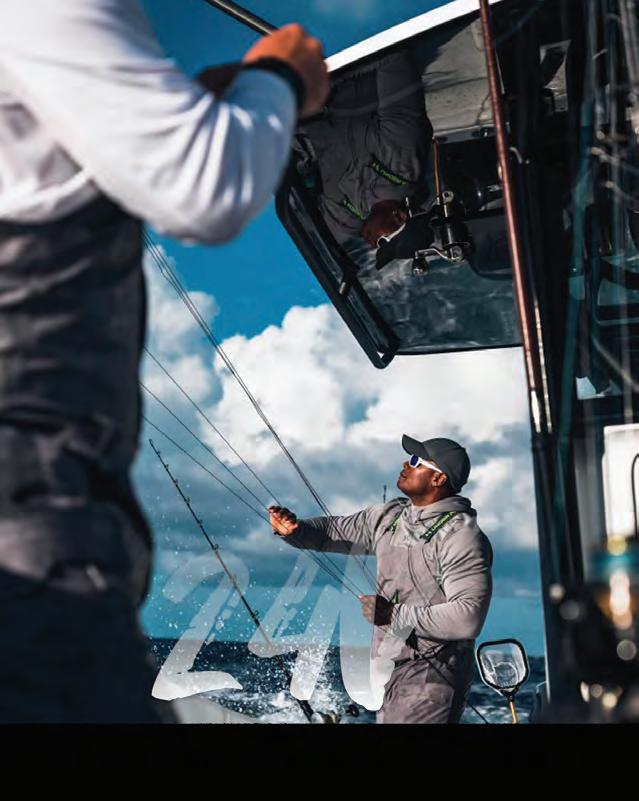
e Miami Beach Convention Center and Pride Park will host the latest in marine technology, boating gear, and vessels up to 49’’. On the water, Herald Plaza and Venetian Marina will feature a lineup of vessels, from sleek center consoles to high-performance powerboats.
A Boating Community Experience
e Progressive Boat Show Experience promises an engaging lineup of seminars, boating classes, and the popular AquaZone, an interactive space where attendees can test products and gain hands-on skills. For those looking to elevate their visit, Windward VIP tickets grant access to exclusive lounges, curated dining options, and concierge service.
Digital ticketing ensures a seamless entry process, with water taxis making it easy to explore the show’s sprawling venues. Water taxi tickets are sold separately.
From anglers to luxury yacht a!cionados, the show caters to all corners of the marine world. With its rich blend of exhibits, educational opportunities, and waterfront allure, it remains a must-visit event on the global boating calendar.
For more details and ticket options, visit www.miamiboatshow.com.







By Joe Woody
When winter descends upon the Smoky Mountains, the streams and rivers transform into a serene and picturesque setting. For avid anglers, this season o ers a unique and rewarding opportunity to !sh for trout. Cold water !shing in the Smokies during winter demands preparation, knowledge, and patience, but the solitude and satisfaction of hooking a trout in these crisp conditions make it all worthwhile.
Trout are cold-water !sh, and they remain active during the winter, albeit at a slower pace. eir metabolism decreases as water temperatures drop, making them less aggressive and more selective in their feeding habits. During this season, trout tend to conserve energy by holding in deeper pools or near submerged structures where currents are slow and food is more accessible.
e Smoky Mountains, known for their pristine streams and diverse aquatic habitats, provide excellent winter !shing opportunities. e recent storm damage has not changed that, although access and former topographical structuring may be somewhat altered the !sh have adapted and so will anglers. Rainbow, brown, and brook trout can all be found in the cold, clear waters of this region, with brook trout being particularly prevalent in the higher elevations.
Winter !shing requires careful planning to ensure success and safety. e Smoky Mountains can get bitterly cold in winter. Dressing in layers, including moisturewicking base layers, insulating mid-layers, and waterproof outerwear, is crucial. Gloves and a hat are always a must: Nymphs, midges, and small streamers are excellent choices for winter trout !shing. Patterns like the Zebra Midge, Pheasant Tail, and Woolly Bugger o en prove e ective. Since aquatic insect activity is minimal in winter, imitating small and slowmoving prey is key.
clear, low water conditions. Using light tippets (5x or 6x) and uorocarbon leaders can improve your presentation and increase your chances of a hookup.
Focus on deeper pools and areas with slow-moving water. Dead dri ing nymphs under an indicator or slowly

Winter trout can be extra wary due to the
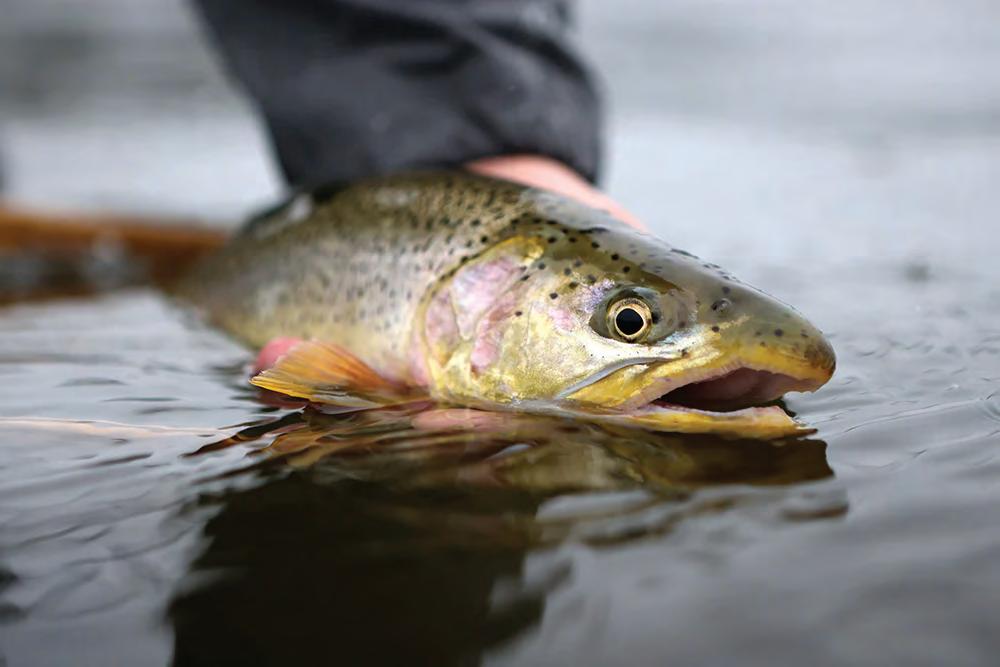
Townsend, this stream is a favorite among anglers for its healthy populations of rainbow and brown trout.
• Deep Creek: Known for its easy access just outside Bryson City, this area o ers a true remote !shing experience with just a short walk up its trail.
• Abrams Creek: Featuring clear waters and ample trout habitat, Abrams Creek is a reliable option for winter anglers
Winter trout are o en more active during the warmer parts of the day. Plan your trip to coincide with midday or early a ernoon. Low, clear water makes trout more alert to movement and noise. Approach the stream cautiously and keep a low pro!le. As any angler in these parts will tell you, always be mindful of slippery rocks and cold water. Wearing wading boots with good traction and a wading belt is essential.

retrieving a streamer can entice a bite. Pay attention to subtle strikes, as trout in winter o en feed so ly.
e Smoky Mountains are home to numerous streams, many of which are accessible year-round. Some top spots for winter !shing include:
• Little River: With easy access near
Fishing for trout in the Smoky Mountains during winter is a serene and ful!lling experience. e combination of tranquil surroundings, reduced crowds, and the challenge of cold-water angling creates an unforgettable adventure. With the right preparation and approach, you can enjoy the magic of winter !shing and make memories that will last a lifetime.



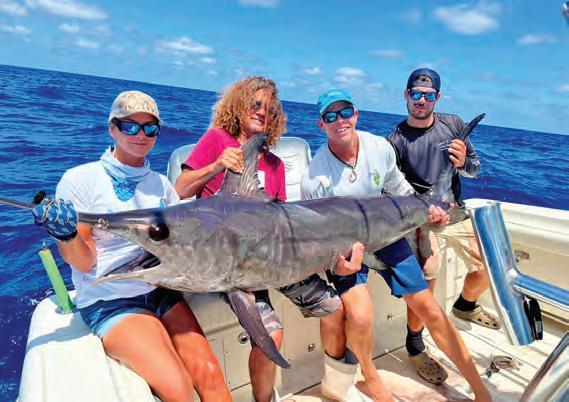
By Capt Quinlyn Haddon
Ihave been prompted to cover the topic of booking a charter a!er a recent experience I had that could have easily been avoided.
I was asked to work a charter with a company that I had never shed with before. e charter was booked last minute through a booking agency, that I will not directly mention. e notes of the booking repeatedly and clearly requested a full day o shore trip for yellow n. I went to meet with the captain, and helped him rig up for a tuna trip for the following day.
Yellow n tuna are not prevalent in the Florida Keys, but black n tuna are, so we informed the clients of this as we headed o shore in the morning.
Nearing the end of the trip, with a box full of tuna, the clients asked when we were going to get into the yellow n snapper.
e clients had wanted to sh inshore for yellowtail snapper, but they accidentally paid more for an o shore trip, simply because they used a booking agency and didn’t understand that yellow n and yellowtail were di erent species.
If you are wanting to book a charter, please call captains directly! Charter captains do not want to take you out on the water for a boat ride, we want to customize your day so you get the most out of it. Hearing about your expectations and helping answer your questions is paramount in our planning of your trip.
We do not do this job for the money, and most of us are scraping by. We have respect for what a big expense it is to book a charter. We understand that some groups may have saved up a long time to have this experience only once in their lives, and it is extremely important that we give you the trip you are looking for. We might even tell you to rethink the timing of your trip so you can come when your bucketlist sh is most targetable, something a booking agency knows nothing about. ey might be designed to take your money, but that is not what we are about.
If you nd a charter company you like through a shing booking agency, I would recommend going around them and calling a charter captain directly. Chances are that they have raised their prices to stomach the 30% fee the agency takes from them, and you can save money. Alternatively, they have not done so, and a direct call will put the money into the pocket where it belongs.
Booking agencies help ll the calendars, and for a lot of shermen whose strong suits are on the water, booking charters and advertising can be challenging. Some of the best captains have zero online presence. ere are a few agencies who aren’t as greedy as the one from this particular experience, and who may actually have knowledgeable people assisting you with your booking. However, nothing is going to beat speaking with the captain who you are hiring and sharing your day with.
We aren’t scary pirates or too busy to put in that phone time with you, and we are happy to connect with you before you book your trip. Give us a call!
Capt. Quinlyn Haddon guides with Sweet E’Nuf Charters out of Marathon, Florida Keys - (504) 920-6342. www.captainquinlyn.com; IG: @captainquinlyn






By Capt. Michael Okruhlik
he question of lure size is a common debate among anglers, and while di erent situations require di erent approaches, one thing is clear: sh don’t read shing articles or watch YouTube videos. ey eat when they want, and as anglers, it’s up to us to adapt. In my experience, adjusting lure size is more important than focusing on color—especially in winter shing for coastal species like trout, red sh, and %ounder.
When things aren’t going as planned, many anglers immediately reach for a di erent color. However, I nd size to be the more important factor. Fish are typically feeding on prey of a speci c size, not necessarily a speci c color. In my experience, changing the size of the lure is usually more e ective than changing its color. If size doesn’t produce a bite, I might try changing the style of the lure next.
As winter approaches, our estuaries undergo several changes: cooler water temperatures, shi!ing forage patterns, less boat tra c, and o!en clearer water. ese changes create two schools of thought about lure size: go bigger or go smaller. Some anglers upsize their lures for the entire season, while others prefer downsizing. Both strategies can work, and I will utilize both methods.
Cold fronts trigger cooling water temperatures and unpredictable sh behavior. Unlike the more consistent feeding patterns of stable weather, sh during early winter can make sh moody, switching between aggressive feeding and total inactivity. Late fall and early winter can be some of the best shing of the year, especially when schools of bait are %ushed out by falling tides. Hungry speckled trout and red sh follow these schools, and I prefer using smaller lures in these active feeding conditions. Fish are typically feeding on smaller prey like shrimp or shad, so a similarly sized lure is o!en the best match.
During these times, I also favor non-natural colors. When bait is abundant, sh can more easily spot a contrasting color, helping them target your lure amid the feeding frenzy. is is di erent from spring shing, where matching the color and size of the bait is key. In the fall and winter, standing out with an eye-catching color can be more e ective.
Another reason for downsizing in winter is clearer water. In some bays, water visibility improves signi cantly during the winter, reaching depths of 6-7 feet of clear water. Fish aren’t accustomed to this level of clarity and can be more cautious. In these conditions, a smaller, less intrusive lure will o!en get more bites. When I can clearly see my lure bouncing along the bottom, a small presentation tends to be more successful.
Winter shing requires %exibility. By focusing on size and action rather than color, and adjusting to factors like water clarity and post-frontal conditions, you’ll increase your chances of success. Fish may be moody, but with the right approach, you can adapt and still catch plenty of sh.
Capt. Michael Okruhlik is the inventor of Knockin Tail Lures® and the owner of www.MyCoastOutdoors.com.


By: Caitlyn Gatrell

Florida is known for many things, but one of its key features is its climate. Year-round we are fortunate enough to enjoy mostly warm temperatures, which means fishing is always on! Of course, during peak winter we experience a drop in temperature, but even our “cold” doesn't come close to the snowy winters experienced up north. This climate creates a unique and inviting environment that attracts anglers and tourists from all over the world! All of which are eager to explore Florida’s rich culture and waters, especially in the stunning Ten Thousand Islands.
Wintertime fishing in Southwest Florida offers chances for success as the changing water temperatures influence fish behavior and migration patterns. Some species retreat or become less populated, while others become more abundant, providing us with exciting opportunities. The most productive spots during this time include points, flats, oyster bars, and along the mangroves. Species like redfish and seatrout are heavily present in these areas filtered in with others such as ladyfish, mackerel, black drum, sheepshead, and snook.
As the waters get cooler, this will push some fish to deeper depths in attempts to find warmer conditions. With that being said, nearshore points, wrecks, and reefs are key areas for finding larger catches like snapper, grouper, and snook during Florida’s winter. A couple species that really come out to play during this time of year are tripletail and cobia. These fish are excellent to catch, known for their strength and fight, as well as their ability to produce a yummy meal.
During the cool temperatures, head offshore to the nearest buoys, pilings, reefs, or even floating debris to find these creatures hanging close by. Shrimp, pilchards, or artificial lures such as Gulp shrimp are excellent at enticing predators this time of year. You can easily find bait piled up on the beaches or points ready to be cast-netted. Sometimes one cast is all you need to fill up your live well.
Peak wintertime fishing in Southwest Florida isn’t just about the catch, it’s also about the experience. The scorching summer days are replaced with crisp, refreshing mornings and mild afternoons and the sudden rainy and windy storms aren't as present. The scenery during this time of year is breathtaking, with golden sunsets, calm waters, and an abundance of wildlife. It’s not uncommon to spot dolphins, manatees, and a variety of bird species while out on the water during the winter. Whether you have your own boat to tag along in or an interest in a charter, a ride (and a cast!) in the Ten Thousand Islands is a must-do during the winter!
JANUARY 23-26

10AM - 5PM DAILY
• Kids Club Activities
• Food Trucks
• Nautical Market and Auction
• Center Consoles, Sport Fishing Boats, Cabin Cruisers, Pontoons and more plus Fishing and Boating Gear
• Yachts and Mega Yachts
• Shops and Restaurants at Crayton Cove
$12 in Advance | $15 at the Gate ADVANCE TICKETS
AVAILABLE ON NaplesBoatShow.org
More Information: MIACC.ORG
HASSEL FREE PARKING
• Preferred parking at Sugden Park
• Free Parking at Collier County Government Center
• Complimentary shuttle transportation to and from both shows







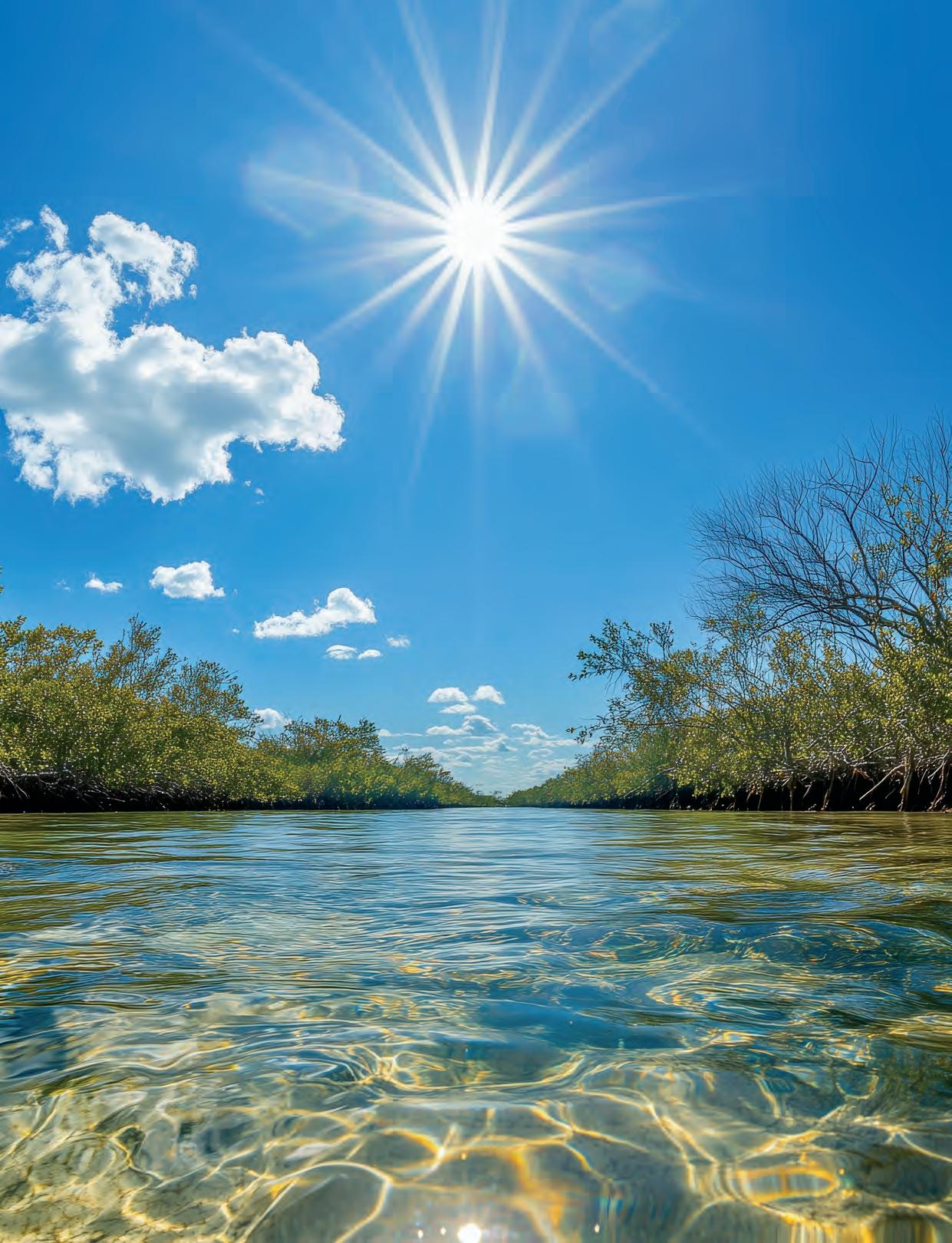




By: Capt. Greg Poland

The fishing both in the Backcountry and around Everglades City has been on fire lately and my clients have been catching everything from bonefish to sailfish. The live bait has been plentiful, now is the time to get out on the water, load up your live well, grab a fly rod, and have some fun! I have been finding a lot of finger mullet and pilchards in and around the Flamingo areas. If you don’t find them close to your home, cruise on out a little further into the Backcountry, and just to be safe, carry various soft plastics which will work almost as good as the live bait if you are in the right spot. My personal preference is to use a 2-4ft piece of fluorocarbon just above the hook, fishing a 1215lb spinning outfit on a 7ft rod in the Backcountry. if you are looking for any of this type of gear, check out your local bait and tackle shops as they have a great selection.
As t he cold fronts start coming through one of my favorite species will start showing up and it will be game on for action packed fishing out on the edge of the Gulf of Mexico, here are some tricks on how to fish out that way for spanish mackerel. You will need some light wire for your leader and either a 2/0 circle hook or a jig head on a light spin rod, the lighter the better so you will have more fun. Buy a few blocks of chum in case you need to move spots and load up on pilchards or live shrimp. I like to drag the chum in a circle to get the spot worked up then put down your trolling motor or anchor up current of your chum slick and start fishing. If you are a fly fisherman or always wanted to give it a try, this is a great time to do so, and after you catch a few on bait give the fly a try and use a fly with a bit of flash to it or a popper. Wishing you all a prosperous and Happy New Year!



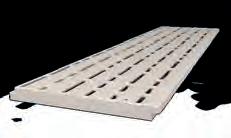











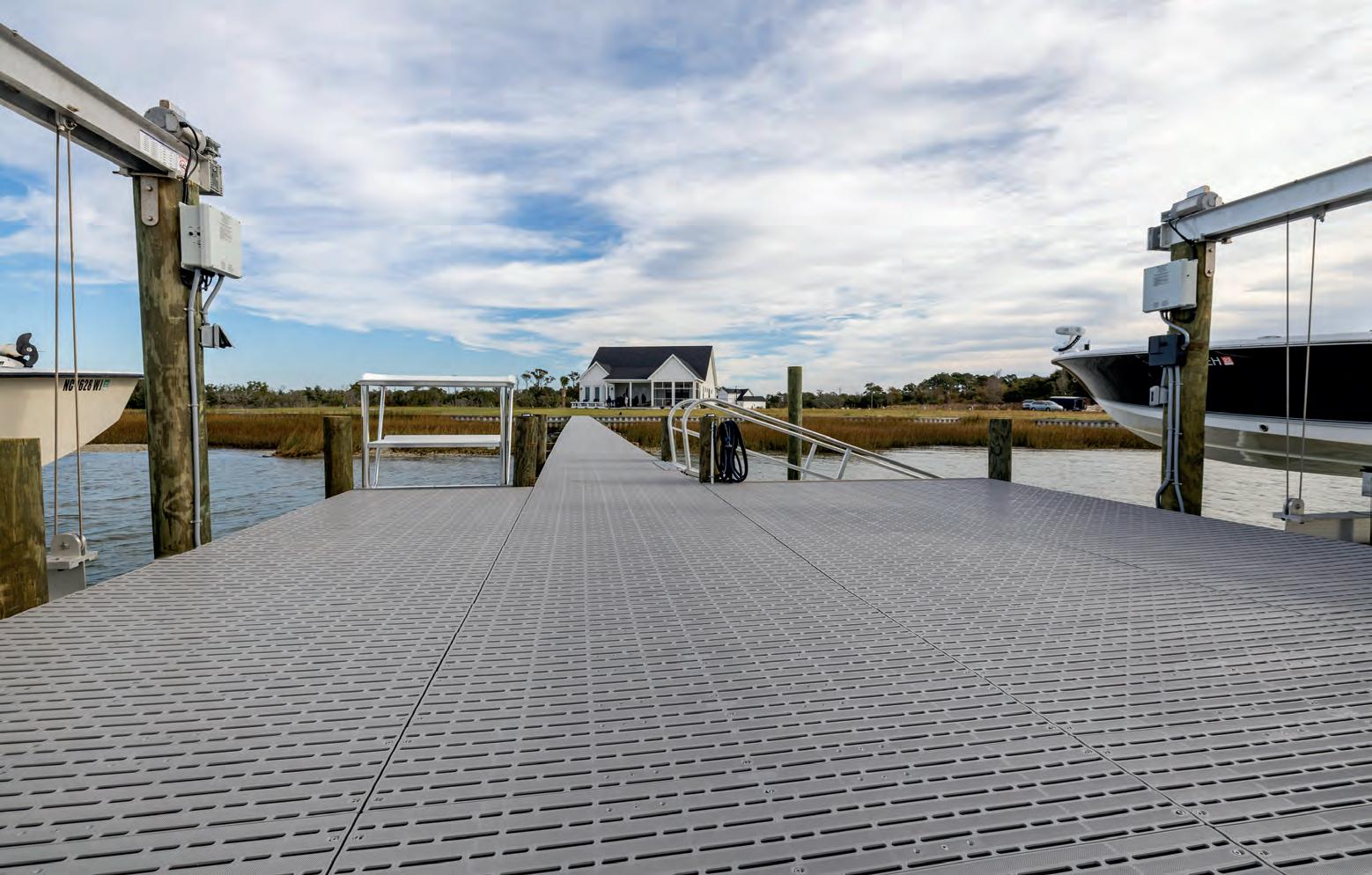

By: Joe Sheaffer

Idon’t know how many times I’m asked by friends and fellow anglers “What lure are you using? What color lure are you using? What size lure are you using?” These are all good questions and definitely important information. However, I’m rarely asked “What is the weight of your lure?” The more time I spend on the water casting lures, the more I’m convinced weight is very important, if not the most important question that we should ask friends or other anglers. I’m not saying color and size aren’t important, but I don’t think fish are overly concerned with the color or size of a potential meal. Fish are opportunistic predators. If they see something that they can get to, they will try to eat it. I think about Redfish nosing the flat, trying to spook a shrimp, worm, pinfish, or crab out of the grass. I’m fairly sure they don’t care if it is brown, purple, green or any other color, they will eat it. I’m fairly sure they don’t care if it is a big crab, or small shrimp, they will eat it. I do think they care if the meal is in their strike or eating zone. There have been many times when a fishing day has been slow, or the fish will hit the
lure but not eat it. I’m thinking, what is going on? I decide to change the size (weight) of my jig. That change many times results in finicky fish start biting the lure and a slow day becomes a good day. Obviously, the depth of the water, the movement of the tide or current, along with increased casting distance plays a big role in the weight we use. Fish are going to eat what they can see or feel in their personal space. The weight of a lure can be the difference in the presentation of your lure. Is lure being presented in the eating zone? I like to have a variety of different weighted jigs on my boat. I regularly will use ⅛ oz to ¾ oz. I Have a couple of larger jigs up to 1 ½ oz. on my boat just in case I may need a much heavier presentation. I never hesitate to change the weight of a jig if the day is slow or has slowed down. Especially if the conditions look to be solid. Next time your fishing day is slow or you're having a difficult time hooking fish, definitely think about changing the weight of your presentation. It might help improve your day. Good luck and keep casting!


By: Eric Henson
Happy New Year everyone! January is a prime time to wet a line in Southwest Florida, where the cooler temps fire up the bite. Whether you’re a seasoned fisherman or a newbie, the fishing action here won’t disappoint.
Inshore, it’s all about sheepshead, redfish, and spotted sea trout. Those “convict fish” better known as sheepshead, are stacked up around docks, bridges, and any structure holding crustaceans. Occasionally you will even find giant schools of them even roaming the flats. Rig up with some live shrimp or fiddler crabs and get ready for a tug-of-war—these striped fighters know how to steal bait.
Redfish and trout are cruising the skinny water, looking for an easy meal. Drift the flats or hug the mangroves, and you’ll find them feeding on live bait or soft plastics. Pro tip: the topwater bite at first light can be electric if you’re lucky enough to time it right.
Another species that comes inshore this time of year are grouper. Although they can be a little bit tough to catch on a kayak. It is still tons of fun trying to do it without getting taken to the cleaners! Drop down some cut bait or live pinfish and hang on docks, inshore reefs, and rock piles and it can be game on. Grouper are absolutely freight trains once hooked so be prepared. Snapper are also another great bycatch when fishing in these areas where grouper hang out.
Whether you’re tossing lures from the yak or pitching live baits, Southwest Florida’s winter fishing is as good as it gets. Make sure your gear’s dialed in, you’re up to the regulations with it being a new year. Hope everyone has another great year of fishing and stay safe out there. Tight lines!

3















13
19
20
21
22
23
24
25
26
27
28
29





















































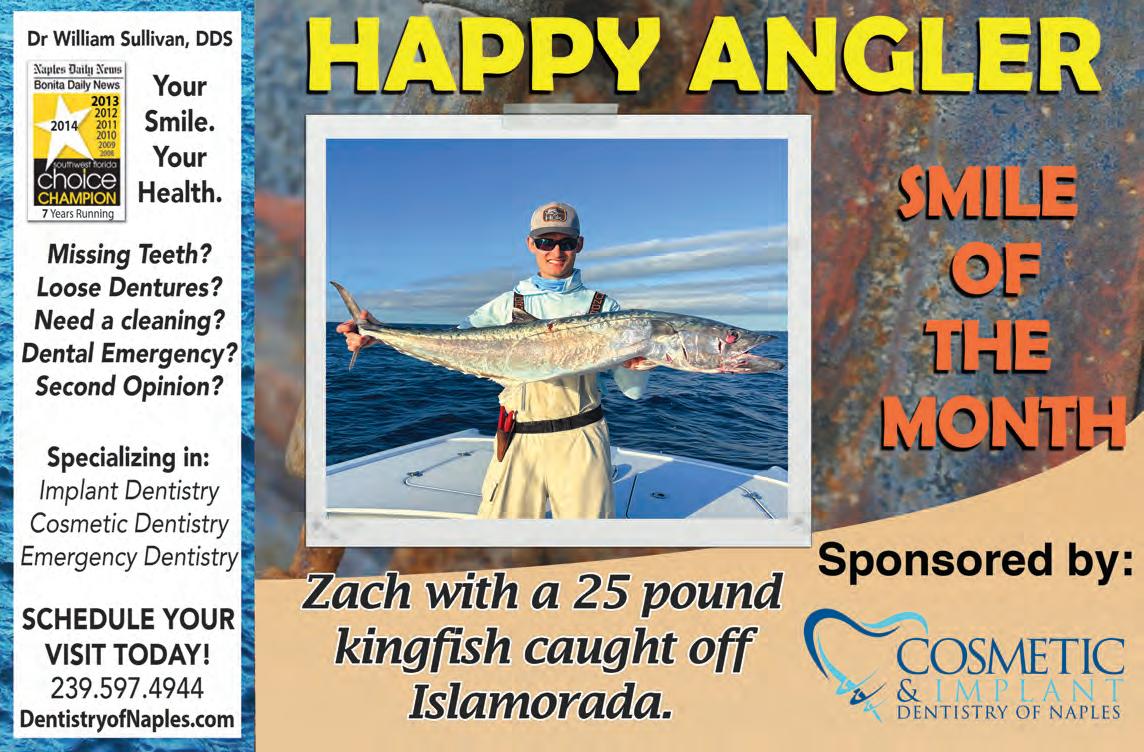
2






















20
22
23
24
26
28














































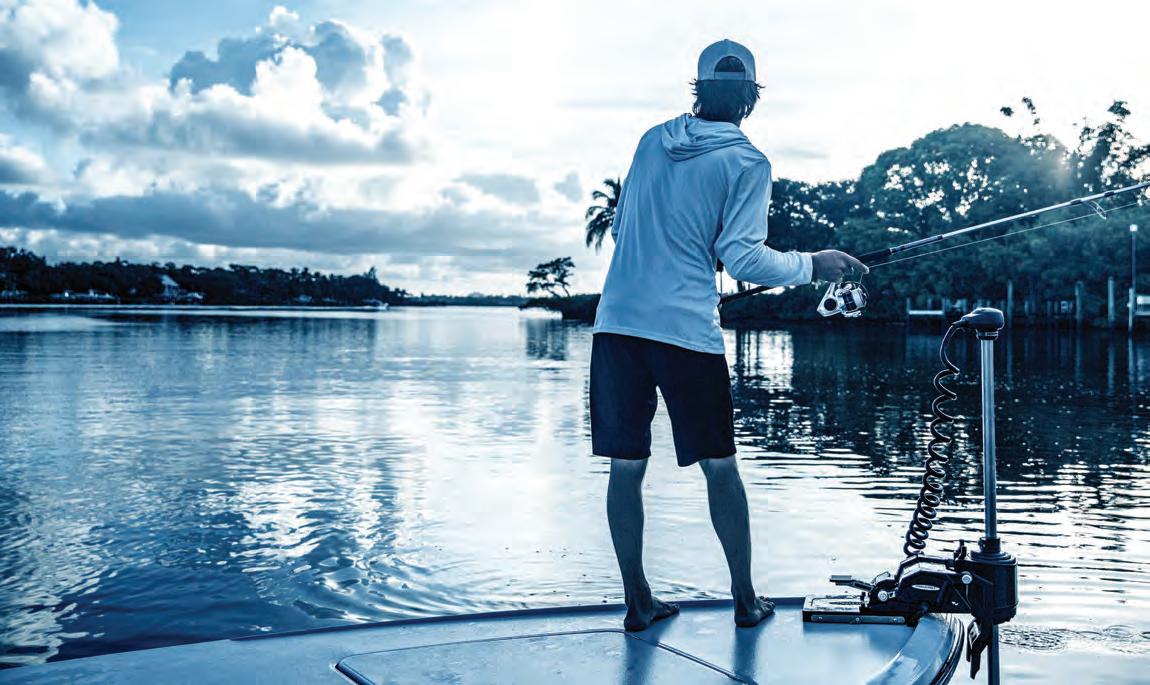
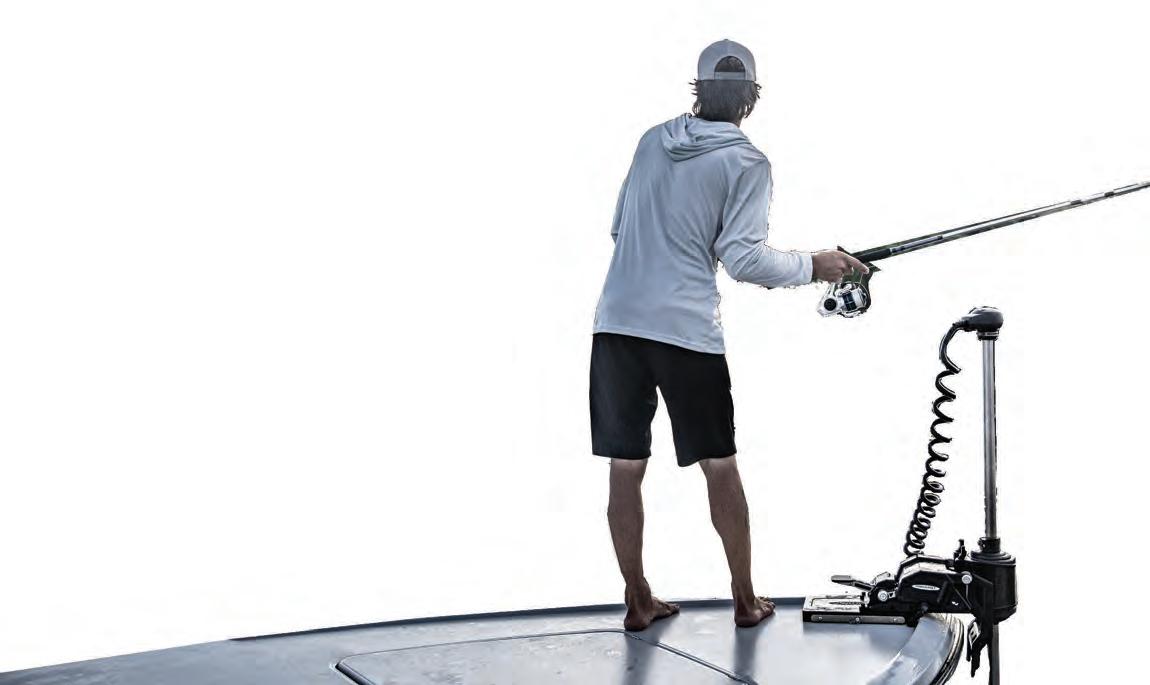

By: Jessica Hendrie
s we welcome 2025, the promise of a new year brings excitement for anglers all over. A fresh opportunity to dream big, and fish big! Fishing offers more than a pastime. It’s a reset button, a chance to disconnect from the noise of daily life and reconnect to what really matters to us. The ride out, the thrill of all it brings and the satisfaction of a successful catch. As we look ahead into our 2025 fishing adventures, it’s time to set some fish-inspired resolutions. Maybe this year, target new species, upgrade your gear, or finally plan that bucket list fishing trip. There’s also a great opportunity to reflect on past successes and learn from the ones that got away. The beauty of this, fishing that
is, is timelessness. Whether you’re casting off a pier or a boat or just dreaming, every moment holds the potential for a memory. This year, I challenge you to take a moment to appreciate the waters you fish and really reflect on the beauty of it. The fish, the scenery, the location, every detail. There’s something so special in what we do. So, here’s to tight lines and peaceful waters ahead in the new year. May 2025 bring you trophy catches, memorable fishing trips, yummy food and so much more. I hope everyone had a wonderful Thanksgiving, a very Merry Christmas and a great New Year!
Happy fishing!






by Capt. Billy Norris
Cooler temperatures mean cooler water, and along with the change in the weather comes a change in the fishing! It is time to say goodbye to our summertime staples like snook, tarpon, and other warm water-loving fish until spring and bust out the gear for our wintertime favorites, namely cobia, grouper and kingfish!
The backwater bite has remained steady over the past month. Snook, trout, redfish and jacks have been the stars of the show. Over the past month there has been a seemingly unlimited amount of bait along the beaches and passes. Mixed schools of pilchards and threadfin herring have been plentiful, and it hasn’t been uncommon to black out two live wells with only one or two castnet throws. All of the backwater fish just mentioned will readily take either pilchards or threads, but if you can’t throw a net, you can always pick up some shrimp at your local tackle shop. As the water continues to cool, we should see some wintertime regulars show up in the backwaters as well. Sheepshead and pompano will soon make their appearance in our local waters, both of which make excellent table fare. As we continue to get cold fronts, the snook and jacks will push farther up into the backwaters, eventually making their ways into the rivers. The Cocohatchee, Imperial and Estero Rivers all will produce solid fish throughout the winter, just ensure you check the tides. Our area has seen some extremely low tides lately, so proper planning is a must.
The offshore bite has also been solid this past month. The bottom has been producing some big upper-slot and over-slot snook. For bait of choice, either cut bait or live threadfins has been my go-to. There have also been some beautiful grouper coming onboard. The gag grouper bite has been particularly hot, with some extra-large size fish being landed. There are plenty of gags around, however, the state has closed the season all year except from September 1-15, so unfortunately putting a gag on your plate is two-week a year occasion nowadays. The snapper bite has also been great, and we’ve been filling the coolers with a mix of mangroves, lanes and yellowtail. Jewfish have just finished their fall spawn, so they will be heading back to deeper waters, but we did manage to put a number of them alongside the boat while they were here. And the long-anticipated cobia arrival has begun! We have been catching some beautiful fish, and there have been schools of cobia cruising up and down out coastline.
For this upcoming month, we’ll start to switch our tactics up to target the wintertime pelagic fish. The schools of spanish mackerel and bonitos have already showed up in numbers, which means the kingfish are not far behind. When looking for pelagic schools, turn your eyes to the sky and try to spot heavy bird activity. Terns, gulls and frigates are a key indicator of pelagic species feeding. For kingfish, I prefer to use herring or blue runners, but they can also be caught trolling artificials. Once the kingfish show up, the big sharks won’t be far behind, so if you want to try your strength against bulls, tigers, sandbars and more, bust out the big gear and start slinging big baits in areas with a lot of fish activity.
The fishing this past month has been great and should only get better as the water cools and we get a good baseline established. Again, remember that the wintertime has more unpredictable weather, seas, and extreme tides, so make sure that your planning is done adequately. The weather is beautiful and the fish are biting, so give us a call if you’d like to get out on the water and knock some fish off of your bucket list!



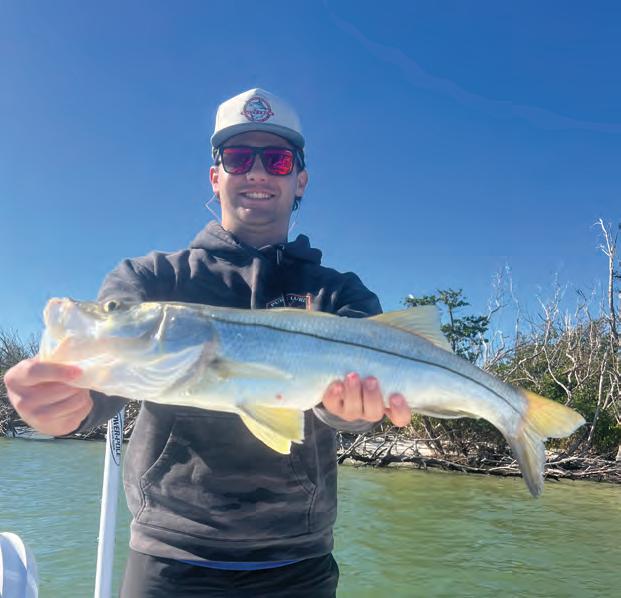
By: Capt. Terry Fisher
very month of every year will present different challenges to all anglers. Understanding when and where to go will make all the difference for catching fish. I am presenting my views from years of experience, fishing Southwest Florida waters, in hopes that anglers will gain more advantage when utilizing some of my recommendations together with their own experiences. These recommendations will focus on which species are best to target during particular months (on a ‘quarterly’ basis) as follows:
JANUARY-MARCH
Sheepshead will be one of the easiest fish to target as they. Larger fish have moved from the offshore reefs and wrecks to the inland waterways to spawn and eat. They will congregate around and under docks, mangroves, around oyster bars and seawalls, making it easy for anglers to locate. Like many species, they like structure such as piles and rocks. Many anglers will use ‘mud crabs’ or fiddler crabs to catch them. I keep it much simpler by using shrimps on small bait hooks with a ‘pinch’ weight to assist when casting the presentation. These fish have a reputation for being difficult to catch. That’s true for any fish that are not in a feeding mode. However, to the contrary, when sheepshead decide to eat, they virtually will hook themselves due to their aggressive mode. Snook is a year around favorite or anglers that have a boat and proper equipment such as a trolling motor and power pole. Most all anglers have a desire to land a snook. If one does not have a boat, canoe, or kayak then I suggest fishing from the beach into the troughs and passes of the outer islands. Vessel owners with proper equipment will have good results from just off the beaches, in the canals and up creeks. Artificial presentations will all produce (swim, crank, soft plastics, and top water). Preferred live baits include pinfish and big shrimps. Snooks favorite live bait requires throwing a cast net for threadfins and white baits, such as pilchards.
Spanish mackerel will begin their migration southward. Artificial presentations such as Gotcha lures, gold and silver spoons produce. Watch for diving birds and usually anglers will find them at those locations. Grouper and snapper move within ten miles of the outer islands of Ft. Myers Beach, Sanibel, Captiva and N. Captiva. Some even find locations closer to the islands. The water temperature has cooled. Prior to now, guides and recreational anglers were traveling 40 to 70 miles offshore to find these fish. Nonetheless, I recommend fishing 30 miles out (80-100 ft. water) the months of January-March for the best chances of larger groupers, snappers, triggers and other fish during these months.
APRIL-JUNE
Seatrout will inhabit most grass flats in 3-6ft. of water. Look for the murky green color indicating sea grass. Larger seatrout will become more prevalent during the early spring months. Artificial presentations all work but shrimp, suspended under a popping cork, will be the most effective way to catch lots of Seatrouts.

Tarpon will begin to arrive during their annual spring migration from Mexico and beyond. Look for them off the beaches, in Pine Island Sound, Redfish/N. Captiva passes, Boca Grande and Charlotte Harbor.
In other words, this time of year and for a couple of months they will be everywhere. I suggest; anglers who have never caught or hooked a tarpon to hire a guide, as there are several locations and several different techniques to be utilized. Proper equipment is also needed. Snook will begin to move from rivers, creeks, and canals to the beaches to spawn during April.
Redfish become the target fish for many. The higher daily tides offer anglers and fishing guides access to shallow, less pressured area(s) of the winter months. Look for them around the oyster beds, mangroves, around the passes and under docks. While artificial presentations will work, Pinfish, Pilchards and shrimps will provide best results.
Mangrove snapper are an inshore favorite. They are smaller than most of the offshore Mangrove snapper as they are younger and will not move offshore until after they reach bigger lengths (usually about 3 years). The inshore harvest length is 10 inches while the offshore catch requires 12 inches. This species is technically gray snapper.
Redfish and snook will be everywhere in the back country areas. Anglers with shallow running boats have access because of the high summer tides. The fish will move to the mangroves for protection and new food sources from the mangrove barnacle as the tides move in, then departing to potholes as the daily tide moves out.
Seatrout will remain everywhere, but the sizes will be smaller as the water temperature heats up. Catfish become a nuisance during the summer months.
Grouper and snapper will move further offshore to 100-140 ft. of water due to water temperatures.
Redfish and snook will mirror the above report for the previous three months. However, this month may produce the largest redfish and snook sizes of the year. Come December the tides will not be as high, and the water will begin to cool, and anglers will be dealing with winter conditions similar to those mentioned in the first quarter. Pompano and spanish mackerel will be for the most part ‘by catches’ while targeting seatrout on the grass flats. This time of the year is when things start changing with lower tides, less boat access to ‘back country’ areas. During the end of the year and throughout the months of January and February with low tides, fish the passes and current cuts.






Jim & Kip were catching reds in Estero Bay.































ShoreStation hydraulic boat lifts are a reliable choice for coastal residents and boating enthusiasts alike. Their strong construction, made with corrosion-resistant materials, allows them to withstand harsh environmental conditions, including sun, storms, and saltwater damage. ShoreStation provides a steadfast solution for protecting waterfront investments, o ering peace of mind to owners in the Sunshine State.


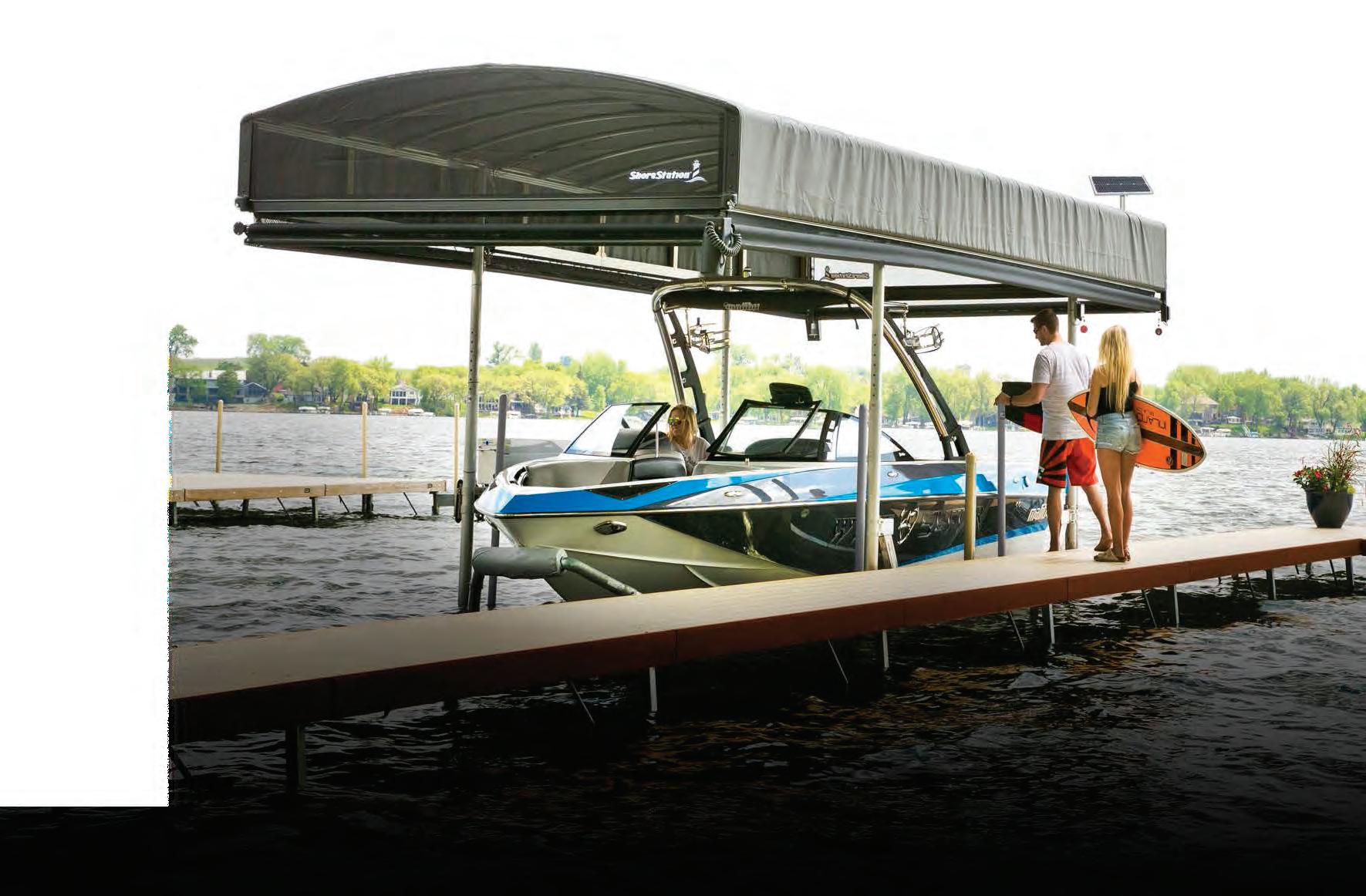





Equipped with exceptional weather resistant fabric and breathable SunTex 80 woven mesh ends for maximum protection and durability, the REVOLUTION™ Series Canopy is the most innovative canopy

Made from the highest quality materials, our innovative hydraulic boat lift is one of the fastest and safest lifts on the market today. When you have a hydraulic lift, there’s no need to worry about wind and waves getting in your way. This lift will give you con dence to safely land and secure your boat in less-than-ideal conditions.
Never miss another moment on the water. Power your lift with clean, free solar power. Our speedy 20 watt charger features solar regulator drainage protection, saving your battery from permanent damage caused by overcharging.



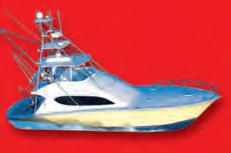




Compare before you sign with any other school www.adamsmarine.com
“NO HIDDEN CHARGES”
Springs - Feb 17
Steinhatchee - Feb 24
- Mar 10 Gainesville - Mar 31
Smyrna Bch - Apr 21
To Reserve a Spot Call: 352-447-1950 Email: info@adamsmarine.com

By A. deGruchy



If you’re looking for an unforgettable start to a 2025 adventure, Islamorada is the place to be. Known as the “Sport!shing Capital of the World,” this gem in the Florida Keys o ers easy access to the Gulf of Mexico, where the waters are packed with some of the most exciting !sh around: cobia and permit.
Cobia are a favorite for good reason. ese !sh are curious, strong, and put up one heck of a !ght. You’ll o en !nd them hanging out near wrecks, buoys, or even %oating debris, and when they bite, you’ll know it. ey can grow up to 60 pounds, so get ready for a battle when one hits your line. ey also make excellent table fare! We are coming up to the best months to target cobia, so de!nitely keep this species in mind when booking a charter.
Permit !shing is next-level stu . ese sleek, silver beauties are as smart as they are strong, making them a bucket-list catch for many anglers. ey love to hang around wrecks and %ats, and they’re picky eaters. ey love crustaceans, but o en get spooked so your casts must be close to perfect. e real thrill of !shing for permit is in the chase. Spotting a permit tailing in the gulf waters, casting just right, and then feeling that line go tight is pure adrenaline. ey’ll test your patience and your skill, but the payo is worth it.
For the ultimate Gulf !shing experience in Islamorada, check out Bean Sport!shing. Capt. Bean specializes in targeting cobia and permit, ensuring a day on the water you’ll never forget. Whether you’re a seasoned pro or a !rst-time angler, his expertise and passion for !shing will make your trip both exciting and successful.
To book a charter, visit www.beansport shing.com. You can also nd Capt. Bean on Instagram @bean_sport shing.

























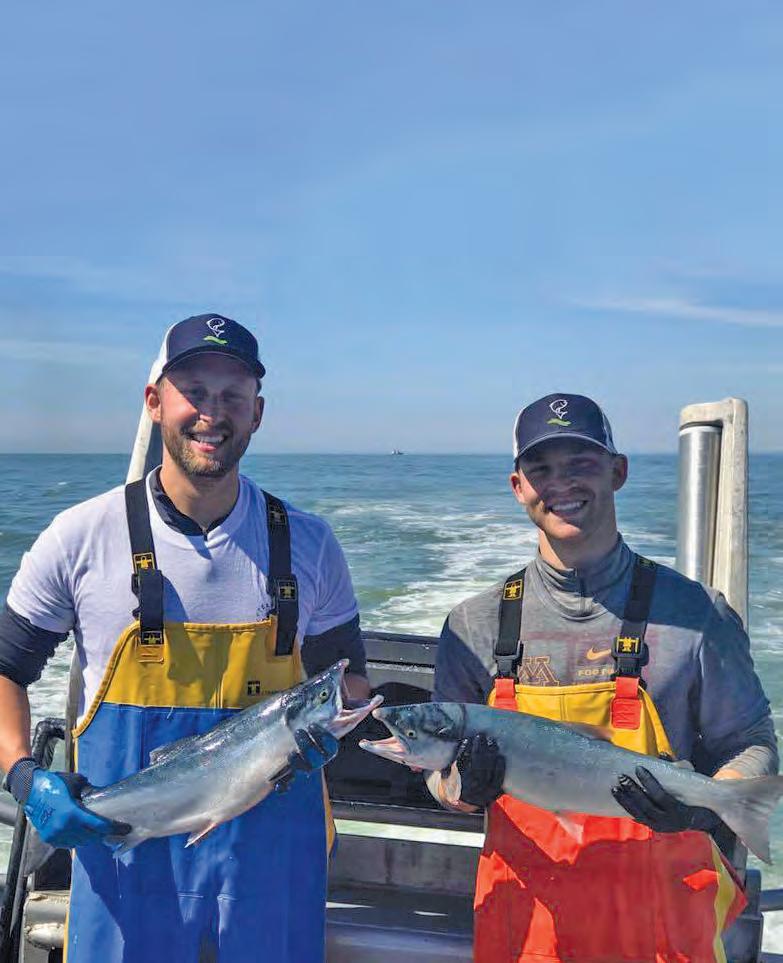





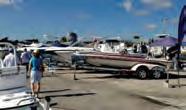







Tim Barefoot
As winter deepens, cooler waters push more !sh o the beaches and toward the warmer edges of the Gulf Stream. With grouper and snapper now o -limits due to regulations, it’s time to shi our focus to productive species still on the table—trigger!sh, vermilion snapper (beeliners), and seabass. For those looking to venture even deeper, deepdropping remains an exciting option.
e December full moon o en marks a turning point in !shing. Grouper and speckled trout seasons wind down, leaving anglers to adapt to what the regulatory environment allows. Fortunately, the stacks of triggers, beeliners, and pelagics in deeper waters o er excellent opportunities. Start your search around the 150-foot mark and use your !sh!nder to locate promising spots.
For precision !shing, modern tools like spot-lock trolling motors—such as the Rhodan or Minn Kota—are game changers. ese motors allow you to hover directly over schools of !sh with ease. However, they can be limited when deploying a kite, as the wind necessary for kite !shing can drain trolling motor batteries quickly. at’s

where anchoring, a classic yet e ective technique, comes into play.
Yes, anchoring may feel like a step back for those spoiled by spot-lock motors, but it’s a reliable method for staying on productive marks without straining batteries. Once anchored, consider adding a kite to your !shing arsenal. Kites are particularly e ective for enticing leader-shy species like yellow!n tuna and wahoo. When properly deployed, they minimize visible leader material in the water, o en resulting in immediate strikes.
provide hardy, versatile bait. Supplement your live bait with cast-netted !sh to use as live chum or cut into chunks.
A sabiki rig is another indispensable tool. Jigging up live bait at your !shing spot o en produces exactly what predatory species are feeding on. Don’t hesitate to use small snapper, grunts, or other bait!sh you catch with a sabiki as o erings on your light line or kite. Wahoo, for example, have been known to eat everything from full-sized grunts to snapper. Frozen or fresh Spanish mackerel also make excellent bait for wahoo and tuna.

Successful kite !shing requires teamwork. Assign one crew member to manage the kite and bait while others focus on !lling the cooler with trigger!sh and snapper. Proper setup is essential. Bring live bait from inshore or nearshore waters; cigar minnows, sardines, pin!sh, and menhaden are excellent choices. A pin!sh trap can also
Experience Fishing during this time of year is about more than just !lling your cooler; it’s about enjoying the process and making memories. Whether you’re targeting bottom-dwellers like trigger!sh or keeping a light line out for the chance at a wahoo or tuna, the key is to stay adaptable and prepared. As always, take the kids along and capture plenty of videos of your adventures. Fishing is more than just a hobby— it’s a way of life.
For more from Tim Barefoot, visit barefootcatsandtackle.com and check out his YouTube channel.








At just six years old, Nathan “Bibil” Barreto is already making waves in the angling world! On July 8, 2024, while !shing Brazil’s iconic Juruena River, Nathan landed an incredible 11.79-kg (26-lb) payara. is catch shattered the IGFA Men’s Smallfry World Record for the species.
Nathan hooked the record-setting payara using cut bait, showcasing his growing skills as an angler. A er verifying the weight on a certi!ed scale, he ensured the safe release of this magni!cent !sh. Nathan’s actions not only highlighted his talent but also demonstrated that conservation is a value no angler is too young to embrace.
e International Game Fish Association (IGFA) has established guidelines for Smallfry World Records to encourage young anglers. Here’s what you need to know:
• Species: Records are maintained for the heaviest !sh of any eligible species.
• Age: Categories exist for male and female anglers aged 10 years and under.
• Weight: Fish do not need to be weighed on land, as long as the weight is veri!ed appropriately.
• L ine Class: Records are recognized for all line and tippet classes covered under IGFA rules.
• Other Rules: All IGFA International Angling Rules apply, except for the standard weighing requirement.
Encouraging young anglers to aim for world record catches—or simply to submit outstanding catches for consideration—o ers a fantastic opportunity to foster a love of !shing. e IGFA’s Smallfry division plays a vital role in promoting the sport among young enthusiasts.
Taking a kid !shing doesn’t just teach them valuable skills—it can improve their lives and create unforgettable memories. Who knows? You might even help them reel in a world record!
For more information on the IGFA Smallfry records division, visit www.IGFA.com.

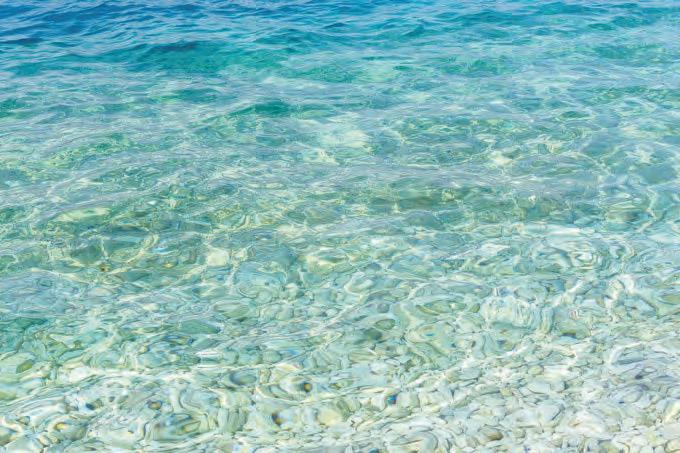


































Choosing the right !shing line is crucial for success on the water. Two popular options— braided and mono!lament lines—o er distinct advantages, and your choice o en depends on your !shing style, target species, and conditions. Let’s compare their strengths and weaknesses to help you decide.
Braided line stands out for its high strength-todiameter ratio. Its thin pro!le allows for less drag and greater line capacity on reels, making it ideal for deep-water !shing. For instance, a 30-pound braid can match the diameter of an 8-pound mono!lament. Mono!lament, while thicker, provides added durability and is o en preferred in situations requiring extra shock absorption, such as battling !sh with sudden, strong runs.
Braid has minimal stretch, giving it superior sensitivity. is makes it perfect for techniques like jigging or bottom !shing, where detecting subtle bites is crucial. It also enhances hook-setting power. On the other hand, mono!lament’s stretch acts as a cushion during hard strikes, reducing the risk of breakage.
Mono!lament generally o ers better abrasion resistance, making it a top choice in areas with rocks or heavy cover. However, it is prone to UV damage over time, which can weaken the line.

Braid is more resistant to UV exposure but can fray easily when rubbed against rough surfaces.
Braided line’s thin diameter and lack of stretch give it an edge for long-distance casting, especially in open water. However, mono!lament’s low visibility underwater makes it advantageous for targeting skittish !sh in clear water. To counter braid’s visibility, many anglers use a uorocarbon leader.
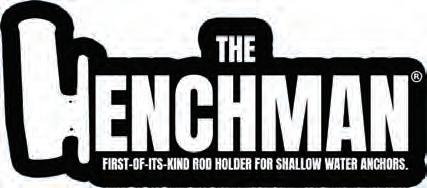
e choice between braid and mono depends on your needs. Braid excels in strength, sensitivity, and casting, while mono shines in shock absorption, abrasion resistance, and stealth. Many anglers carry both to adapt to various scenarios or use a braid mainline with a mono or uorocarbon leader for versatility.
Ultimately, knowing when to use each type can make all the di erence in your !shing success.










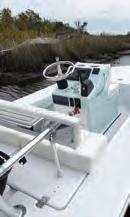









Praise for DiamondAura®
“So much sparkle and the play of light on DiamondAura® beats any diamond!” — D.D. from Columbus, OH
It was the jewelry piece that made the world stop and take notice. In the middle of a long volley during the big American tennis tournament, the chic blonde athlete had to stop play because her delicate diamond bracelet had broken and she had to fnd it. Te tennis star recovered her beloved bracelet, but the world would never be the same.
From that moment on, the tennis bracelet has been on the lips and on the wrists of women in the know. Once called eternity bracelets, these bands of diamonds were known from then on as tennis bracelets, and remain the hot ticket item with jewelers.



A classic tennis bracelet serves up over 10 carats of sparkle for a guaranteed win
with D Flawless diamonds from another company that costs $57,000!
Want to look like a million bucks without stressing over losing or damaging something that cost you a fortune? Te Love Wins Tennis Bracelet is a simple strand of glittering gems in precious sterling that epitomizes elegance.

FREE earrings with your purchase of the Love Wins Bracelet.

Te frst time we ofered this bracelet, we sold out literally in minutes. It was our fastest selling product of 2021. It took six months to get it back in stock — Get yours before we run out!
And there’s more... we will also include our Ultimate Diamond Alternative™ DiamondAura® stud earrings for FREE!
Jewelry Specifcations:

• 10 ¾ ctw of the Ultimate Diamond Alternative®, DiamondAura®
• Rhodium-fnished .925 sterling silver settings
• Bracelet: Fits wrists to 7 ½". Earrings: 1 ctw with post backs


We’ve captured this timeless classic with over 10 total carats of DiamondAura®, our signature diamond alternative stone. Tis sparkling marvel rivals even the fnest diamonds (D Flawless) with its transparent color and clarity, and both are so hard they can cut glass. Don’t believe me? Te book “Jewelry and Gems – Te Buying Guide,” praised the technique used in our diamond alternative DiamondAura®: “Te best diamond simulation to date, and even some jewelers have mistaken these stones for mined diamonds,” it raved. For comparison, we found a similarly designed 10 carat tennis bracelet
Love Wins Tennis Bracelet (10 ¾ ctw) $399 $39* + S&P
FREE stud earrings (1 ctw) with your purchase of the Love Wins Bracelet — a $99 value!
*Special price only for customers using the offer code.

Your Offer Code: LWB324-02



